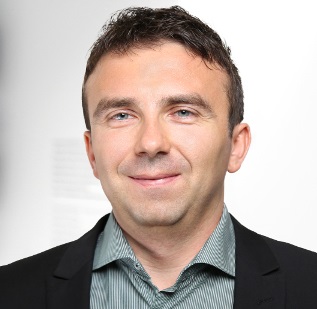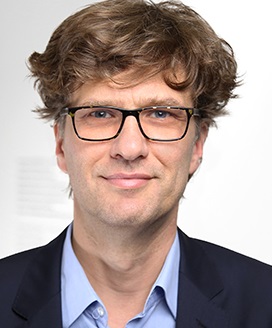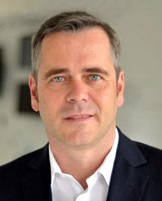Title
The Convergence of Machine Learning and Communications
Abstract
The areas of machine learning and communication technology are converging. Today’s communication
systems generate a large amount of traffic data, which can help to significantly enhance the design and
management of networks and communication components when combined with advanced machine learning
methods. Furthermore, recently developed end-to-end training procedures offer new ways to jointly optimize the
components of a communication system. Also, in many emerging application fields of communication technology,
e.g., smart cities or Internet of things, machine learning methods are of central importance. This paper gives an
overview of the use of machine learning in different areas of communications and discusses two exemplar
applications in wireless networking. Furthermore, it identifies promising future research topics and discusses
their potential impact.
Keywords
Artificial intelligence, communications, machine learning, wireless networks
Authors
 Wojciech Samek Wojciech Samek
(Fraunhofer Heinrich Hertz Institute, Germany)
Wojciech Samek is head of the Machine Learning Group at Fraunhofer Heinrich Hertz Institute, Berlin, Germany. He studied computer science at Humboldt University of Berlin, Germany, Heriot-Watt University, UK, and University of Edinburgh, UK, from 2004 to 2010 and received the Dr. rer. nat. degree (summa cum laude) from the Technical University of Berlin, Germany, in 2014. In 2009, he was visiting researcher at NASA Ames Research Center, Mountain View, CA, and, in 2012 and 2013, he had several short-term research stays at ATR International, Kyoto, Japan. Dr. Samek was awarded scholarships from the European Union's Erasmus Mundus programme, the German National Academic Foundation and the DFG Research Training Group GRK 1589/1. He is associated with the Berlin Big Data Center and is a member of the editorial board of Digital Signal Processing. He was a co-chair of the 2017 Workshop on Deep Learning: Theory, Algorithms, and Applications and organizer of workshops on interpretable AI and machine learning at ICANN'16, ACCV'16 and NIPS'17. In 2016, he received the best paper prize at the ICML Workshop on Visualization for Deep Learning. He has authored or co-authored more than 75 peer-reviewed journal and conference papers, predominantly in the areas deep learning, interpretable artificial intelligence, robust signal processing and computer vision. |
 Slawomir Stanczak Slawomir Stanczak
(Fraunhofer Heinrich Hertz Institute and Technische Universität Berlin, Germany )
Slawomir Stanczak studied control theory at the Wroclaw University of Technology, Wroclaw, Poland, and at the Technical University of Berlin (TU Berlin), Berlin, Germany, where he received the Dipl.-Ing. degree and the Dr.-Ing. degree (summa cum laude) in electrical engineering in 1998 and 2003, respectively; the Habilitation degree (venialegendi) followed in 2006. From 2003 to 2016, he was leading a research group with the Fraunhofer Institute for Telecommunications, Heinrich Hertz Institute, and he was the Acting Director of the Heinrich-Hertz-Lehrstuhl with TU Berlin from 2010 to 2014. Since 2015, he has been a Full Professor with TU Berlin and the head of the Network Information Theory Group in the Faculty of Electrical Engineering and Computer Science. In addition, he is the head of the Wireless Communications and Networks department since 2015. Prof. Stanczak has been involved in research and development activities in wireless communications since 1997. In 2004 and 2007, he was a Visiting Professor with RWTH Aachen University, Aachen, Germany, and in 2008, he was a Visiting Scientist with Stanford University, Stanford, CA, USA. He is a co-author of two books and more than 200 peer-reviewed journal articles and conference papers in the area of information theory and wireless communications and networking. Dr. Stanczak received research fellowships from the German Research Foundation and the Best Paper Award from the German Communication Engineering Society in 2014. He was a Co-chair of the 14th International Workshop on Signal Processing Advances in Wireless Communications (SPAWC 2013). Between 2009 and 2011, he was an Associate Editor of the European Transactions for Telecommunications (information theory) and an Associate Editor of the IEEE Transactions on Signal Processing between 2012 and 2015. |
 Thomas Wiegand Thomas Wiegand
(Technische Universität Berlin and Fraunhofer Heinrich Hertz Institute, Germany)
Thomas Wiegand is a professor in the department of Electrical Engineering and Computer Science at the Technical University of Berlin and is jointly heading the Fraunhofer Heinrich Hertz Institute, Berlin, Germany. He received the Dipl.-Ing. degree in Electrical Engineering from the Technical University of Hamburg-Harburg, Germany, in 1995 and the Dr.-Ing. degree from the University of Erlangen-Nuremberg, Germany, in 2000. As a student, he was a Visiting Researcher at Kobe University, Japan, the University of California at Santa Barbara and Stanford University, USA, where he also returned as a visiting professor. He was a consultant to Skyfire, Inc., Mountain View, CA, and is currently a consultant to Vidyo, Inc., Hackensack, NJ, USA. Since 1995, he has been an active participant in standardization for multimedia with many successful submissions to ITU-T and ISO/IEC. In 2000, he was appointed as the Associated Rapporteur of ITU-T VCEG and from 2005-2009, he was Co-Chair of ISO/IEC MPEG Video. The projects that he co-chaired for the development of the H.264/MPEG-AVC standard have been recognized by an ATAS Primetime Emmy Engineering Award and a pair of NATAS Technology & Engineering Emmy Awards. For his research in video coding and transmission, he received numerous awards including the Vodafone Innovations Award, the EURASIP Group Technical Achievement Award, the Eduard Rhein Technology Award, the Karl Heinz Beckurts Award, the IEEE Masaru Ibuka Technical Field Award, and the IMTC Leadership Award. He received multiple best paper awards for his publications. Thomson Reuters named him in their list of “The World’s Most Influential Scientific Minds 2014” as one of the most cited researchers in his field. He is a recipient of the ITU150 Award. |